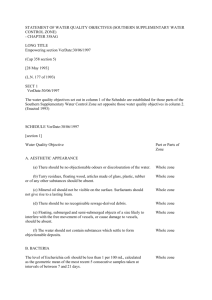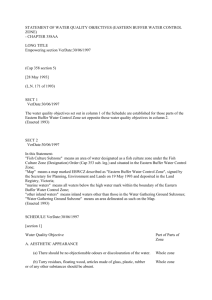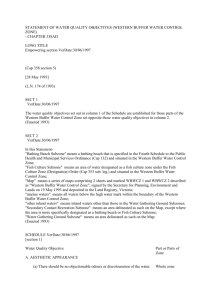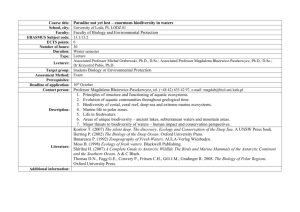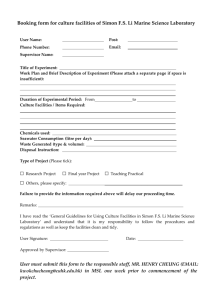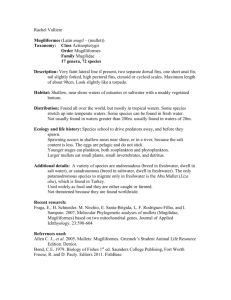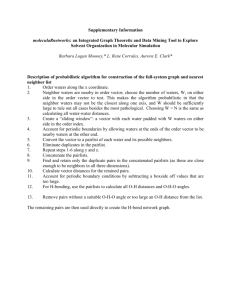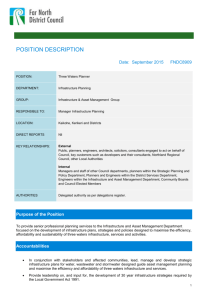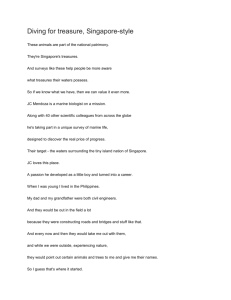hk90255
advertisement
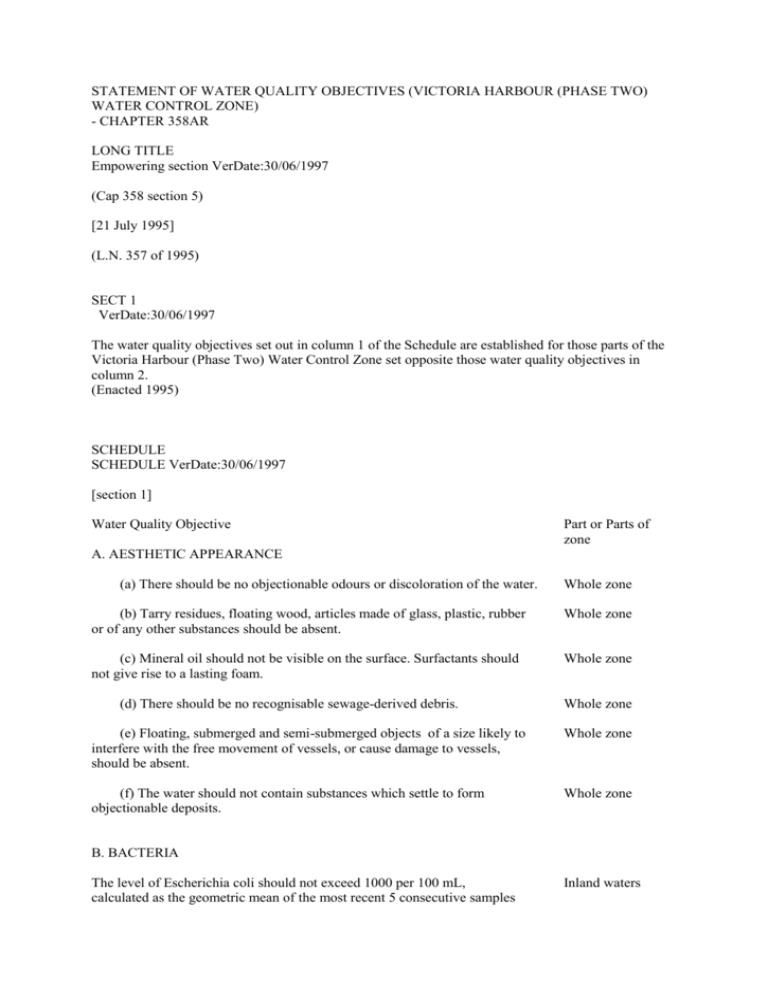
STATEMENT OF WATER QUALITY OBJECTIVES (VICTORIA HARBOUR (PHASE TWO) WATER CONTROL ZONE) - CHAPTER 358AR LONG TITLE Empowering section VerDate:30/06/1997 (Cap 358 section 5) [21 July 1995] (L.N. 357 of 1995) SECT 1 VerDate:30/06/1997 The water quality objectives set out in column 1 of the Schedule are established for those parts of the Victoria Harbour (Phase Two) Water Control Zone set opposite those water quality objectives in column 2. (Enacted 1995) SCHEDULE SCHEDULE VerDate:30/06/1997 [section 1] Water Quality Objective Part or Parts of zone A. AESTHETIC APPEARANCE (a) There should be no objectionable odours or discoloration of the water. Whole zone (b) Tarry residues, floating wood, articles made of glass, plastic, rubber or of any other substances should be absent. Whole zone (c) Mineral oil should not be visible on the surface. Surfactants should not give rise to a lasting foam. Whole zone (d) There should be no recognisable sewage-derived debris. Whole zone (e) Floating, submerged and semi-submerged objects of a size likely to interfere with the free movement of vessels, or cause damage to vessels, should be absent. Whole zone (f) The water should not contain substances which settle to form objectionable deposits. Whole zone B. BACTERIA The level of Escherichia coli should not exceed 1000 per 100 mL, calculated as the geometric mean of the most recent 5 consecutive samples Inland waters taken at intervals of between 7 and 21 days. C. COLOUR Human activity should not cause the colour of water to exceed 50 Hazen units. Inland waters D. DISSOLVED OXYGEN (a) The level of dissolved oxygen should not fall below 4 mg per litre for 90% of the sampling occasions during the whole year; values should be calculated as the annual water column average (see Note). In addition, the concentration of dissolved oxygen should not be less than 2 mg per litre within 2 m of the seabed for 90% of the sampling occasions during the whole year. (b) The level of dissolved oxygen should not be less than 4 mg per litre. Marine waters Inland waters E. pH (a) The pH of the water should be within the range of 6.5-8.5 units. In addition, human activity should not cause the natural pH range to be extended by more than 0.2 unit. Marine waters (b) Human activity should not cause the pH of the water to exceed the range of 6.0-9.0 units. Inland waters F. TEMPERATURE Human activity should not cause the daily temperature range to change by more than 2.0. Whole zone G. SALINITY Human activity should not cause the salinity level to change by more than 10%. Whole zone H. SUSPENDED SOLIDS (a) Human activity should neither cause the suspended solids concentration to be raised more than 30% nor give rise to accumulation of suspended solids which may adversely affect aquatic communities. Marine waters (b) Human activity should not cause the annual median of suspended solids to exceed 25 mg per litre. Inland waters I. AMMONIA The un-ionized ammoniacal nitrogen level should not be more than 0.021 mg per litre, calculated as the annual average (arithmetic mean). Whole zone J. NUTRIENTS (a) Nutrients should not be present in quantities sufficient to cause Marine waters excessive or nuisance growth of algae or other aquatic plants. (b) Without limiting the generality of objective (a) above, the level of inorganic nitrogen should not exceed 0.4 mg per litre, expressed as annual water column average (see Note). Marine waters K. 5-DAY BIOCHEMICAL OXYGEN DEMAND The 5-day biochemical oxygen demand should not exceed 5 mg per litre. Inland waters L. CHEMICAL OXYGEN DEMAND The chemical oxygen demand should not exceed 30 mg per litre. Inland waters M. TOXIC SUBSTANCES (a) Toxic substances in the water should not attain such level as to produce significant toxic, carcinogenic, mutagenic or teratogenic effects in humans, fish or any other aquatic organisms, with due regard to biologically cumulative effects in food chains and to interactions of toxic substances with each other. Whole zone (b) Human activity should not cause a risk to any beneficial use of the aquatic environment. Whole zone Note: Expressed normally as the arithmetic mean of at least 3 measurements at 1 m below surface, mid depth and 1 m above the seabed. However in water of a depth of 5 m or less the mean shall be that of 2 measurements (1 m below surface and 1 m above seabed), and in water of less than 3 m the 1 m below surface sample only shall apply. (Enacted 1995)
